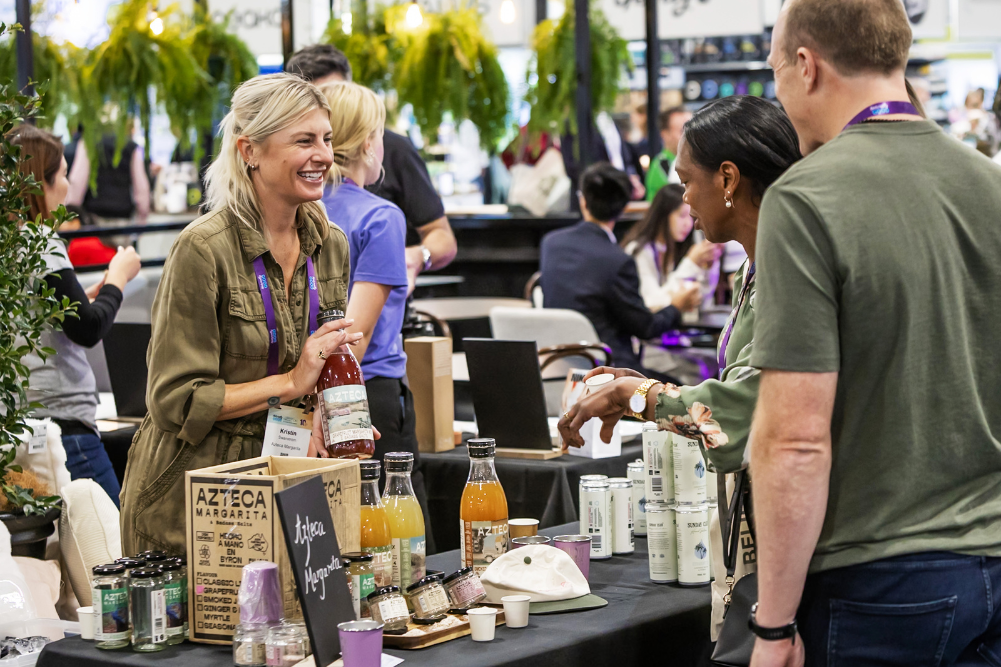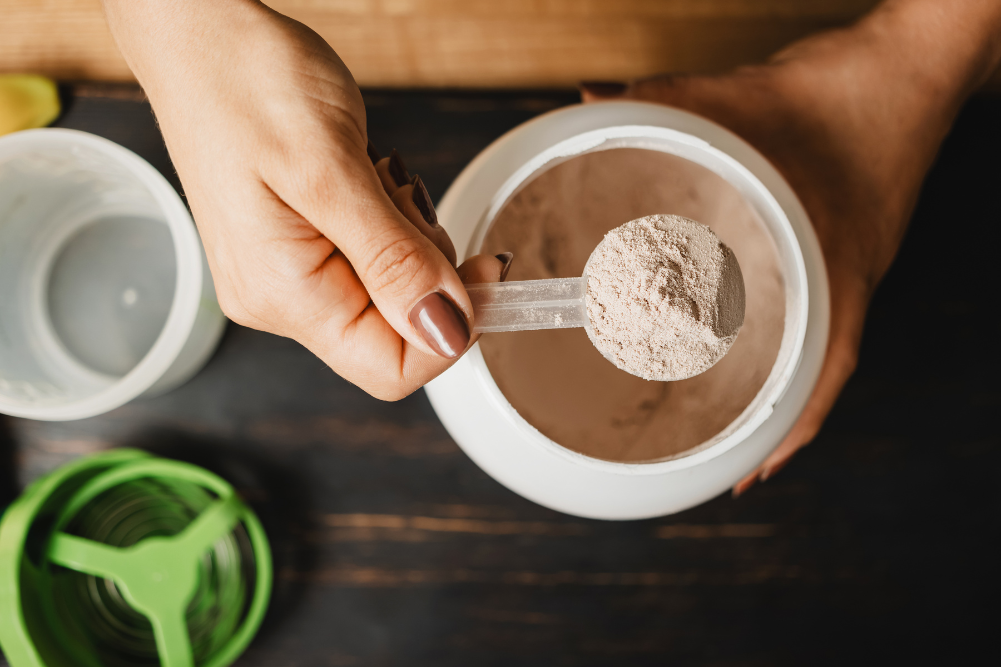Salute the sunshine: the healing power of the sun
You rely on the sun to give you light, warmth and life itself; yet too much can send you down the path of disease. So how can you protect your skin while still reaping all the benefits of sunshine?
For aeons, humans have revered the sun, yet over recent years, many have come to fear its power. It has long been known that sun exposure fortifies bone structure, elevates mood and governs your body clock; however, too much will put you at risk of deadly melanoma. With the looming threat of skin cancer, the rise of vitamin D deficiency, and the sunscreen aisle becoming a minefield of toxic ingredients and perplexing terms, you too are probably confused. Is the sun good or bad? The answer, of course, lies in between.
The healing power of sunshine
The first rays of morning sunlight stimulate serotonin and cortisol production, gently awakening you from your slumber. Sunlight detected via the retina throughout the day prompts the release of more serotonin, which regulates appetite and calms your mood. The advent of darkness prompts the conversion of serotonin into sleep-inducing melatonin. Leaving your curtains open to receive morning sunlight and avoiding electronic screens at night-time can greatly improve your sleep patterns and ensure you awaken feeling refreshed. The sun is also key to vitamin D production.
Having a healthy vitamin D status is, in itself, associated with a brighter mood; however, studies have also shown that getting plentiful sun exposure can reduce depression and fatigue, irrespective of vitamin D levels. If you find yourself feeling gloomy in winter, you’re not alone. Seasonal affective disorder is a type of depression that arises with a change in seasons, most often from the dip in sunlight occurring in the winter months. Sun exposure enables the production of adrenocorticotropic hormone, enkephalin and beta-endorphin. These molecules reduce stress, block pain and protect heart health. The opiate-like effect of beta-endorphin on the brain may be addictive, resulting in withdrawal effects when sun exposure is reduced.
To ensure you’re getting enough vitamin D, spend at least 30 minutes a day in the sun with at least your arms or legs exposed.
A long-term study on Swedish women found that sun-seeking behaviour was associated with an increased risk of skin cancers, but did not reduce life expectancy; while women who actively avoided sunshine had an increased risk of cardiovascular disease and significantly reduced life expectancy. Even smokers who had high sun exposure lived longer than non-smokers who avoided sunshine.
Sunshine and vitamin D both protect heart health. Ultraviolet A (UVA) rays from the sun stimulate the production of nitric oxide, which regulates blood pressure and fluid balance. There is a higher risk of coronary heart disease, stroke and potentially deadly blood clots in winter compared to summer. In fact, in most developed countries including Australia death rates soar in the winter compared to summer months.
The incidence of childhood type 1 diabetes correlates with latitude and is lowest at the equator, where sunshine abounds. Vitamin D decreases the risk of developing type 2 diabetes, while high levels of melatonin (produced in the absence of sunshine) can impair insulin production. Glycated haemoglobin is a marker for poor blood sugar regulation, and is generally markedly lower in summer than winter.
Alpha-melanocyte-stimulating hormone is produced on sun exposure to regulate glucose metabolism, suppress appetite and boost libido. Sunlight has also been found to improve the quality of your gut bacteria and reduce the incidence of inflammatory bowel disease, independent of vitamin D levels. The benefits of sunshine seem boundless, with studies also indicating that sunshine can stimulate mitochondrial function, improve acne, protect against cancer and of course improve bone health and autoimmune conditions through the production of vitamin D.
The sunshine vitamin
Vitamin D is a fat-soluble nutrient that prompts the immune system to fight infection. It is essential for intestinal calcium absorption and regulation of calcium levels in the blood by the parathyroid glands. Around 25 per cent of Australians are vitamin D deficient, with deficiency rates rising in winter. Vitamin D deficiency can cause seasonal affective disorder, insomnia, gut dysfunction, softening of the teeth and bones, heart issues and slow physical development in infants and children. Signs and symptoms of deficiency can include nervousness, diarrhoea, burning in the mouth and throat, nearsightedness and muscle weakness and cramping. Vitamin D deficiency is often accompanied by elevated follicle-stimulating hormone and luteinising hormone, iron deficiency, increased serum phosphatase and high parathyroid hormone levels. Absolute deficiency during childhood causes rickets — a softening of the bones, with severe cases characterised by bowed legs.
To make vitamin D, oil glands secrete the steroid 7-dehydrocholesterol onto your skin’s surface. This is reabsorbed into the outer layers of the skin, where it reacts with ultraviolet B (UVB) rays to form precholecalciferol. It then takes two to three days for the precholecalciferol to be rearranged to form vitamin D3, also called cholecalciferol. This molecule diffuses from the skin into your blood to be transported to sites of action around the body.
To ensure you’re getting enough vitamin D, spend at least 30 minutes a day in the sun with at least your arms or legs exposed. In the Australian summer, this should be before 10am or after 2pm, to avoid sunburn. On low-UV days or in cloudy weather, it will take longer to receive the same dose. Exact doses of sunshine are near impossible to determine as your needs will vary depending on your latitude, altitude, complexion and daily weather changes.
About 6000 tonnes of sunscreen wash into coral reefs each year. Avoid products containing oxybenzone and octinoxate, as these chemicals are harmful to aquatic life.
While most vitamin D intake ideally comes from the sun, about 10 per cent should be obtained through food. Wild-caught fish, dairy, meat, cod liver oil, eggs, sprouted seeds and some mushrooms (portobello, maitake, morel, button and shiitake) contain vitamin D. Placing mushrooms out in the sun for 15 to 20 minutes will stimulate them to produce a higher content of vitamin D. Your vitamin D levels can be determined by a simple blood test. If you need supplementation, seek the advice of a qualified naturopath or nutritionist to determine your specific dosage requirements, which can range widely. Because it is a fat-soluble vitamin, toxicity is possible if excessive doses are taken over time.
Dangers of sunshine
UVB rays from the sun affect the epidermis, the outer layer of the skin. These rays can cause redness and sunburn and damage the DNA in the epidermis. UVA rays have a longer wavelength and penetrate deeper into the skin, reaching the dermal layer where the melanocytes sit. This radiation passes through windows and clouds and can damage collagen, elastin and keratinocytes, insidiously causing long-term skin damage such as wrinkling.
Melanin minimises the penetration of UV rays and acts as an antioxidant, while also darkening the appearance of the skin. When melanocytes are stimulated by UVA they produce melanin in an attempt to prevent DNA damage. A mole is a cluster of melanocytes, which can be genetic or developed through sun exposure. When melanocytes develop significant DNA damage, they can reproduce out of control, resulting in melanoma.
Malignant melanoma is a rare form of skin cancer which is often deadly. It is associated with brief, intense sun damage like blistering episodic sunburn. Although the risk of melanoma is much higher in fair-skinned people, those with very dark skin can also develop the disease, and are prone to late diagnosis.
The more common types of skin cancer, basal cell carcinoma and squamous cell carcinoma, usually develop from repeated sun exposure over a long period of time. People who work outdoors are at the highest risk, but these types of cancer are more treatable. It is important to note that while UV exposure is linked to skin cancer risk, there are many other factors involved and research is ongoing. Melanomas can appear on body parts seldom exposed to the sun. Environmental factors, genetics, diet and preexisting health conditions all play major roles in cancer development.
Unfortunately, testing for skin cancer in Australia is mostly limited to observation under magnification, and biopsy — often the only way you’ll find out whether a mole needs to be cut out — is by having it cut out. Most general practitioners now offer skin checks; however, a dedicated skin cancer clinic may be able to give you a more reliable assessment as these doctors often have more specialised equipment and experience. If you are concerned about any moles, have them checked out as soon as possible. Removal can minimise the risk of malignancy, and small moles can be quickly removed with a punch biopsy. Take a good-quality zinc and vitamin C supplement for two to three months and apply rosehip oil daily after any biopsy to promote healing and minimise scarring.
Choose sunscreens with care
Ideally, you need a “broad-spectrum” sunscreen: this means it protects from both UVA and UVB. While logic would suggest there’s a big difference between a sun protection factor (SPF) of 15+ and 50+, there’s really not. The number indicates an estimate of how much time your sun protection is multiplied by. For example, if you personally burn after 10 minutes, a 15+ sunscreen will theoretically protect you for 150 minutes, and a 30+ sunscreen would protect you for 300 minutes. Confusingly, it’s still recommended you reapply your sunscreen every two hours for efficacy regardless of the strength, due to factors such as water exposure and sweating. Furthermore, the SPF rating is based mostly on the UVB protection offered, meaning as the SPF gets higher, the disparity between UVA and UVB protection widens. An SPF of 15+ will block 93 per cent of UVB rays, whereas 30+ blocks 97 per cent and 50+ blocks 98 per cent.
This dizzying labelling strategy leads many to use high-SPF products incorrectly due to a false sense of invulnerability, potentially leading to increased sun damage. High-SPF sunscreens contain higher concentrations of toxic sun-filtering chemicals. It’s best to stick to a lower SPF and reapply often. Make-up and moisturisers can provide additional protection, but their specific SPF claims are dubious as you are unlikely to apply the excessive amount required to meet the SPF on the label.
Mineral or physical sunscreens use zinc oxide or titanium dioxide to scatter UV rays so they bounce off the skin. They offer broad-spectrum protection and are safe, with little to no skin penetration. The main downside is cosmetic, as the formulas tend to be thicker and whiter than their chemical counterparts. Chemical sunscreens absorb the rays, convert them to heat and then deactivate them. This process can worsen rosacea and brown spots by increasing the internal skin temperature. Many ingredients in chemical sunscreens are absorbed and show up in urine, breast milk and blood samples. Oxybenzone in particular is a known endocrine disruptor and causes allergic skin reactions. Chemical sunscreens are generally thinner and more spreadable, but need to be applied 10 to 30 minutes before sun exposure and require frequent reapplication, while physical sunscreens work immediately and last longer except in cases of water exposure.
At the end of the day, sunscreen always ends up in the water, via the oceans we swim in or the showers we wash in. About 6000 tonnes of sunscreen wash into coral reefs each year. Avoid products containing oxybenzone and octinoxate, as these chemicals are harmful to aquatic life. Products labelled “reef friendly” avoid these two ingredients; however, it is still important to check for octocrylene, homosalate and octisalate which may also cause coral bleaching and harm sea creatures.
Use your sunscreen correctly
When applying sunscreen, take care not to forget the ears, lips, feet, back of the hands, inner thighs, upper back and the part in your hair. It’s recommended to apply 35mL of product to cover the average adult’s body. If you use a spray, be sure to avoid inhalation. Reapply your product every two hours, or after swimming or sweating. A hat, kaftan, sunglasses and shade should also be used for prevention.
It’s important to remove your sunscreen at the end of a day in nature to avoid a lingering white film and blackhead-inducing layer. Massage coconut oil into your skin, then soak a hand towel in hot water, wring it out and wipe the skin clean.
Protect with antioxidants
Eating a diet rich in antioxidants including lycopene and vitamins A, C and E will boost your skin’s ability to forestall skin damage. Increase your intake of berries, citrus fruits, melons, tomatoes, pomegranate, cacao, krill, salmon, orange-coloured vegies and bright green vegies. Avoid toxic, pro-oxidant foods and lifestyle choices — there’s a reason a leathery complexion often accompanies a smoker’s voice or beer gut. Cancer is cell mutation. Epigenetic studies consistently show that if you nurture your body with organic food, avoid carcinogens wherever possible, and take specific natural medicines such as sulphorophane when indicated, even those with undesirable genes can potentially switch off perilous programming.
Aftercare
In the event of a sunburn, you can accelerate your recovery with natural medicines you probably have at home. First, hydrate your skin from within by drinking electrolyte-rich coconut water or eating watermelon. Every beachside household should have an aloe vera plant. The gel contained in its spiky leaves will relieve heat and speed healing when applied to a sunburn. Chamomile or black tea bags can be applied wet and cool to the skin, or use cotton pads soaked in a water dilution of apple cider vinegar. Oats have emollient and soothing properties and work well when wrapped in a fine cloth or stocking, then wet and pressed onto the affected area. Grated potatoes, cucumber, apple or tomatoes can be used similarly to soothe and heal. If your skin is extremely burnt or blistered or you feel unwell after high sun exposure, seek medical attention immediately. Signs of sunstroke include headache, dizziness, nausea, weakness, an inability to sweat despite being hot, dry hot skin and a rapid heartbeat.
Tanning
If you like the look of a tan, keep in mind that sunless doesn’t necessarily equal safe. Sunbeds use UVA rays and should absolutely be avoided. However, fake tans have come a long way. In most fake tans, dihydroxyacetone is the ingredient which alters the shade of your skin. Natural tanners use natural sources such as sugar beets. Synthetic brands use man-made dihydroxyacetone. In natural formulas, it only reacts with the top layers of the skin, whereas synthetic formulas may add toxic chemicals to allow it to penetrate deeper, giving you a darker and more rapid tan, along with more toxicity and damage. Avoid these toxic ingredients: propylene glycol (a petrochemical), phenoxyethanol, parabens, FD&C colouring (artificial dye), fragrance, and anything with “PEG” in the name.
In conclusion
Sunshine is absolutely essential for health, but best enjoyed in moderation. Australians are so blessed to have sunshine all year round. Welcome in a delicious daily dose of sunshine in the mornings and afternoons, while sensibly avoiding getting burnt in between. It’s possible to enjoy the sun, care for the oceans and look after your health all at the same time. The sun is to be neither feared nor revered, but respected.








